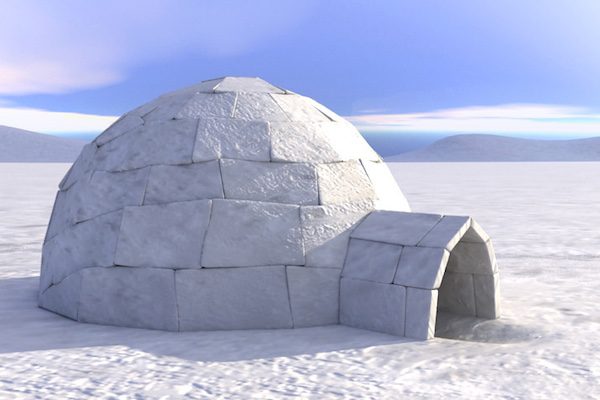General
Shelters made from ice or snow usually require tools such as a snow saw, snow knife, shovel or machete. Construct a shelter no larger than needed reducing the space to heat. Never sleep directly on the ground – instead use pine boughs, grass, or other insulating materials.
Shelter Location
Wooded areas usually provide the best location. Snow has good insulating properties, it traps air keeping you warmer than a tent. Create the shelter entrance facing away from prevailing winds.
Shelter Hazards
In extreme cold, do not use metal for shelter. The metal will conduct away precious heat. Be sure to ventilate your shelter if you build a fire or cook inside. Never fall asleep with the stove or lamp burning – carbon monoxide poisoning is a real danger.
Shelter Types
- Snow Cave – Find a drift about 3-5 metres deep. Dig into the side away from the wind. While building the shelter, keep the roof rounded for strength. Make the floor higher than the entrance. Ensure the roof is high enough to sit up. The walls and ceiling should be at least 30-50 cm thick. After breathing inside, there will develop a thin crust of ice on the inside walls, which will make the shelter walls airtight. Make a ventilation hole in the ceiling. Use your pack, snow blocks or other material to block the entrance.
- Quinzhee – Shovel a pile of snow into the shape and size of an igloo. By mixing snow of different temperatures, you create a sintering process that causes dry powdered snow to harden – it will take between 1-3 hours. Go skiing or snowshoeing. Hollow it out. Make the floor higher than the entrance. The walls should be at least 30-50 cm thick. After breathing inside, there will develop a thin crust of ice on the inside walls, which will make the quinzhee walls airtight. Make a ventilation hole in the ceiling. Use your pack, snow blocks or other material to block the entrance.
- Snow Trench – Dig a trench at least 1 metre deep. Use sticks, ground sheets or cut snow blocks for a roof. This shelter is highly insulated and provides a great deal of shelter from the environment.
- Igloo – The ultimate winter shelter, however, it requires a great deal of training and practice to make properly. If you are not trained, construct another simpler shelter.
- Lean-To – The classic lean-to shelter can be greatly improved by piling snow around the sides for extra insulation. The lean-to will allow for a campfire in the open face. This shelter is less efficient at retaining heat.
- Fallen Tree – Find a fallen tree and dig out the snow underneath it. This shelter is very easy to build, however often hard to find the right tree. Caution – this shelter can be dangerous. You could become trapped between the tree, snow and ground.
- Tree-Pit – Dig snow out from under a large tree. Cover with branches to provide a roof.





No responses yet